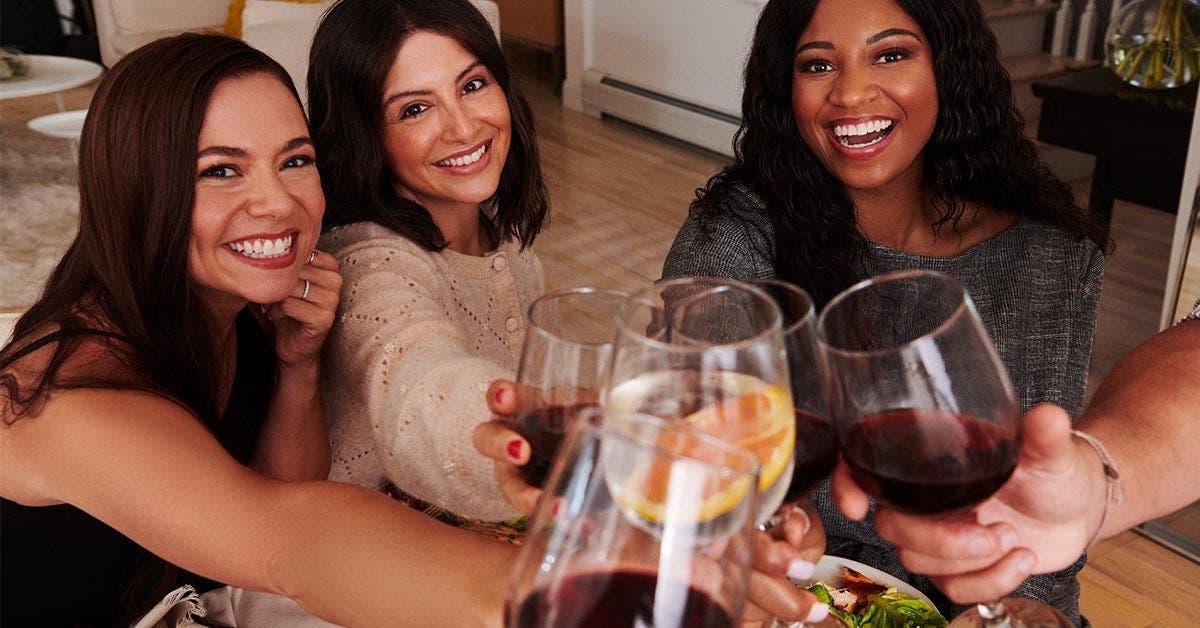7 Wine Myths Debunked


This article takes a deep dive into the science of wine to debunk seven common myths you’ve likely come across as a wine drinker, whether you’re a casual drinker or a true connoisseur. From the price of the bottle to the ideal temperature, here’s everything you need to know about choosing, storing, and enjoying your favourite bottles of wine.
1. Expensive Wines Are Better
When it comes to the price of wine, the assumption is that the higher the price, the better the wine. There are many factors at play when pricing a bottle of wine, including where the grapes are grown and where the wine is made after the harvest, the length of time the wine is aged, the vintage of that particular bottle, regional taxes, and importing fees. If a wine places highly at a competitive tasting and receives a numerical grade, this can also influence price. It’s important to remember that taste is subjective — if you enjoy drinking one type of lower-priced wine, try drinking wines from that same region (while staying in the same price point.)
2. Wine Legs Equal a Better Wine
The term “wine legs” refers to the droplets or streaks of wine that are formed when wine is swished or moved around inside a glass (the French refer to wine legs as “tears of a wine.”) It is a common misconception that thick, syrupy legs indicate a superior wine when in fact, they merely give a vague indication of how much alcohol is in the wine (information that is easily and more accurately found on the wine label.)
3. Red Wine Should Only Be Served at Room Temperature
Despite popular advice to the contrary, if you store and serve bottles of red wine at room temperature, chances are good you’re doing the wine a major disservice. Most red wines should be served at around 15 to 20 degrees Celsius (or slightly below room temperature.) In fact, many wine experts suggest storing your bottles of red in the refrigerator, giving them half an hour out of the fridge before serving. Fruity, smooth wines such as Beaujolais and Gamay, lighter Pinot Noirs, and Valpolicella Classico wines can all be served chilled — just give the bottles a brief 10 minutes at room temperature before pouring.
4. A Deeper Wine Punt Means a Better-Quality Wine
A wine punt, which is the glass indentation at the bottom of some bottles of wine, was historically used to create a more stable base for wine bottles when they were hand-blown. Nowadays, with the exception of the most prized bottles of old and expensive wine, the punt is merely decorative and offers no assurance the enclosed wine is superior in any way.
5. Meat Only Pairs Well With Red Wine (and Fish Only Pairs Well With White Wine)
To say that red wine pairs well only with meat and that white wine should only be paired with chicken is an overly simplistic approach to pairing wine and food. When making wine pairings, focus your attention on the method in which the food is prepared as well as the other ingredients and the actual type of protein. For example, many types of red wine pair well with steak, but if a cream sauce or fresh salsa is added then there are more possibilities to pair robust white wines such as Chardonnay, California Sauvignon Blanc, Chenin blanc, Viognier, or even skin-contact white wines (also called orange wines) with red meat. Likewise, a light white wine will taste best with mild fish, but tuna, salmon, and other oily fish can stand up to rosé or merlot.
6. White Wine Should Be Served Ice-Cold
While many white wines benefit from time in the fridge, which usually sit at around 3 degrees Celsius, when it comes time to pour the wine it should be closer to 7 or even 8 degrees. Drinking too-cold white wine won’t allow you to appreciate the full flavour of the wine, as cold is infamous for dulling the complexities of wine as well as other types of food and beverages.
Exceptions to the rule are unaged white wines such as Vinho Verde and other Spanish and Portuguese dry white wines, these are crisp enough to be perfectly flavourful and refreshing when fully chilled.
7. Bubbly is a Special-Occasion Wine Only
Whether you’re popping open a bottle of Champagne, Cava, prosecco, or Moscato d’Asti, there’s no need to save the bubbly for toasting special occasions. While it’s true that some sparkling wines pair well with caviar and foie gras, those same wines are often equally as delicious served with more everyday fare: think tempura vegetables, lightly fried chicken, grilled cheese, fruity desserts, lightly dressed salad greens with slivered almonds, or creamy deviled eggs. No matter what the occasion is, make sure sparkling wines are chilled to a cool 7 degrees Celsius by storing the bottles in the fridge for two and a half hours or for 25 minutes in the freezer.
